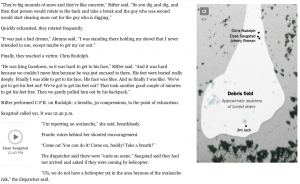By MARIA LUIZA LAGO
The Guardian and other newspapers are talking about an error that can happen and has happened to about 1,000 iPhone 6 users: Error 53. This error can literally “kill your phone.” erasing photos, data or making the cell phone completely useless.
Error 53 happened to the users that repaired their Touch ID button with a non-official company or individual or had their phones damaged, but not fixed because they were still usable. And even worse, the error seemed to appear to the users that updated the latest version of software, iOS 9.
Thousands of Apple consumers lost their trust on the product, but the company pledged that the “error 53” is to protect customer’s security, since it disables any kind of substitution on an iPhone made from companies that are non-official.
“This security measure is necessary to protect your device and prevent a fraudulent Touch ID sensor from being used. If a customer encounters Error 53, we encourage them to contact Apple Support,” stated the company.
But what about the phones that were slightly damaged or the people that installed the latest version of the software?
The article “Apple under pressure as lawyers pledge action over ‘Error 53’ codes” published by The Guardian affirms that consumers grew angrier after going to the Apple Store and complaining about the error and being told nothing could be done but to buy another phone to solve the problem.
Lots of iPhone users take their phones to get fixed by other sources rather than Apple, for their repair can be really expensive — in the UK to repair the home button the cost is £236, or $340 –- but they end up with a higher cost: having a phone that doesn’t work even after repair. Apple measures should take more in consideration their costumers that are with useless phones and continue with their customer’s security, as long as they work and can be repaired at any Apple Store.

![image[2]](http://students.com.miami.edu/reporting/wp-content/uploads/2014/10/image2-300x187.jpg)
